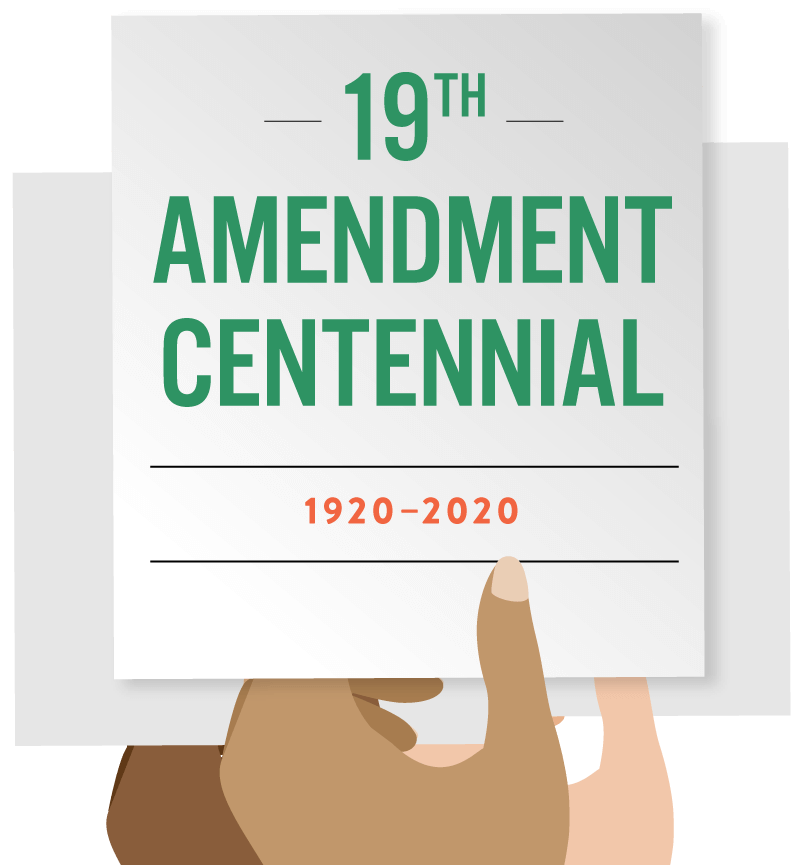
American women have been seeking the right to vote for hundreds of years, and they finally achieved it with the passage of the 19th amendment to the Constitution in 1920. Our timeline shows some highlights from the women’s suffrage movement as well as some of the trailblazing women from the last century who have broken glass ceilings in civic life.
● 1848
The first Women’s Rights Convention is held in Seneca Falls, New York. Elizabeth Cady Stanton writes the “Declaration of Sentiments.”
● 1849
The first state constitution in California extends property rights to women.
● 1850
The first National Women’s Rights Convention takes place in Worcester, Massachusetts.
● 1851
Sojourner Truth, a former slave, delivers her now famous “Ain’t I a Woman?” speech at a women’s rights convention in Ohio.
● 1866
Elizabeth Cady Stanton and Susan B. Anthony create the American Equal Rights Association, dedicated to the goal of universal suffrage.
● 1868
In New Jersey, 172 women cast ballots in a separate box during the presidential election.
● 1869
Wyoming is organized with a women’s suffrage provision.
● 1872
Susan B. Anthony is arrested for trying to vote in the presidential election in New York. Sojourner Truth demands a ballot at a polling place in Michigan.
● 1878
A woman’s suffrage amendment is introduced for the first time in the United States Congress.
● 1887
The first vote on women suffrage is taken in the Senate.
● 1893
Colorado becomes the first state to adopt a state amendment giving women the vote.
● 1896
The National Association of Colored Woman is formed in Washington, DC by Mary Church Terrell, Ida B. Wells-Barnett, Margaret Murray Washington, Fanny Jackson Coppin, Frances Ellen Watkins Harper, Charlotte Forten Grimke, and Harriet Tubman.
● 1912
Theodore Roosevelt’s Progressive Party becomes the first national political party to adopt a woman’s suffrage plank.
● 1913
Alice Paul and Lucy Burns organize the Congressional Union, which became the National Women’s Party in 1916. The party protests to publicize the suffrage cause.
● 1916
Jeannette Rankin of Montana becomes the first American woman elected to represent her state in the U.S. House of Representatives.
● 1920
The Nineteenth Amendment, granting women’s suffrage, is ratified.
● 1923
The National Women’s Party proposes the Equal Rights Amendment, aimed at eliminating gender discrimination. It has not been ratified.
List sources for 1848-1923: National Park Service and National Women’s History Museum
● 1925
Cora Belle Reynolds Anderson of Michigan is the first Native American woman elected to a state legislature.
● 1933
As Labor Secretary from 1933- 1945, Frances Perkins is the first woman to hold a cabinet position.
● 1948
Margaret Chase Smith becomes the first woman elected to the Senate without having first been appointed to serve.
● 1953
Playwright Clare Boothe Luce, former member of Congress (1943-47), is appointed ambassador to Italy, the first woman to represent the U.S. in a major diplomatic office.
● 1954
Eleanor Roosevelt and Lorena Hickok publish Ladies of Courage, a tribute to women in American politics. It also contains a chapter that urged women to enter politics and offered concrete advice on how to get started.
● 1954
Two women destined to be powerful advocates for women's rights in Congress, Edith Green and Martha Wright Griffiths, are elected to the U.S. House of Representatives.
● 1962
Patsy Takemoto Mink becomes the first woman of color elected to the U.S. House of Representatives.
● 1966
Constance Baker Motley is appointed by President Lyndon Johnson to the United States District Court for the Southern District of New York, becoming the first African American woman to serve as a federal judge.
● 1968
Shirley Chisholm becomes the first African American woman to serve in Congress. She remains in the House of Representatives until 1982. She also runs for president in the Democratic primaries in 1972.
● 1975
March Fong Eu is elected California's Secretary of State, the first Asian American woman elected to a state constitutional office.
● 1976
Mary Rose Oakar becomes the first Arab American woman elected to Congress.
● 1980
Eunice Sato is the first Asian American woman to serve as mayor of a major American city. She was mayor of Long Beach, CA, from 1980-1982.
● 1981
Sandra Day O’Connor is appointed by President Reagan to the Supreme Court, making her its first woman justice.
● 1984
Geraldine Ferraro is the first woman to run for vice-president on a major party ticket.
● 1993
Ruth Bader Ginsberg becomes the second woman to be confirmed to the U.S. Supreme Court.
● 1993
Carol Moseley Braun becomes the first woman of color elected to the United States Senate.
● 1997
Madeleine Albright becomes the first female Secretary of State.
● 2001
Condoleezza Rice is appointed National Security Adviser by President George W. Bush, becoming the first woman (and the second African American) to hold the post, and later becomes the first African American woman to serve as U.S. Secretary of State.
● 2007
Nancy Pelosi becomes the first female Speaker of the House.
● 2009
Sonia Sotomayor is nominated as a U.S. Supreme Court Justice. Sotomayor becomes the first Latina and the third woman on the court.
● 2014
Janet Yellen becomes the first woman to be chair of the board of governors of the Federal Reserve System, the central bank of the United States.
● 2016
Hillary Clinton is the first woman to be the presidential nominee of a major political party.
List sources for 1925-2016: Time: Fifty Women Who Made American Political History; Thirteen: A Brief History of Women in American Politics; Encyclopedia Britannica: 7 Female Firsts in U.S. Politics.